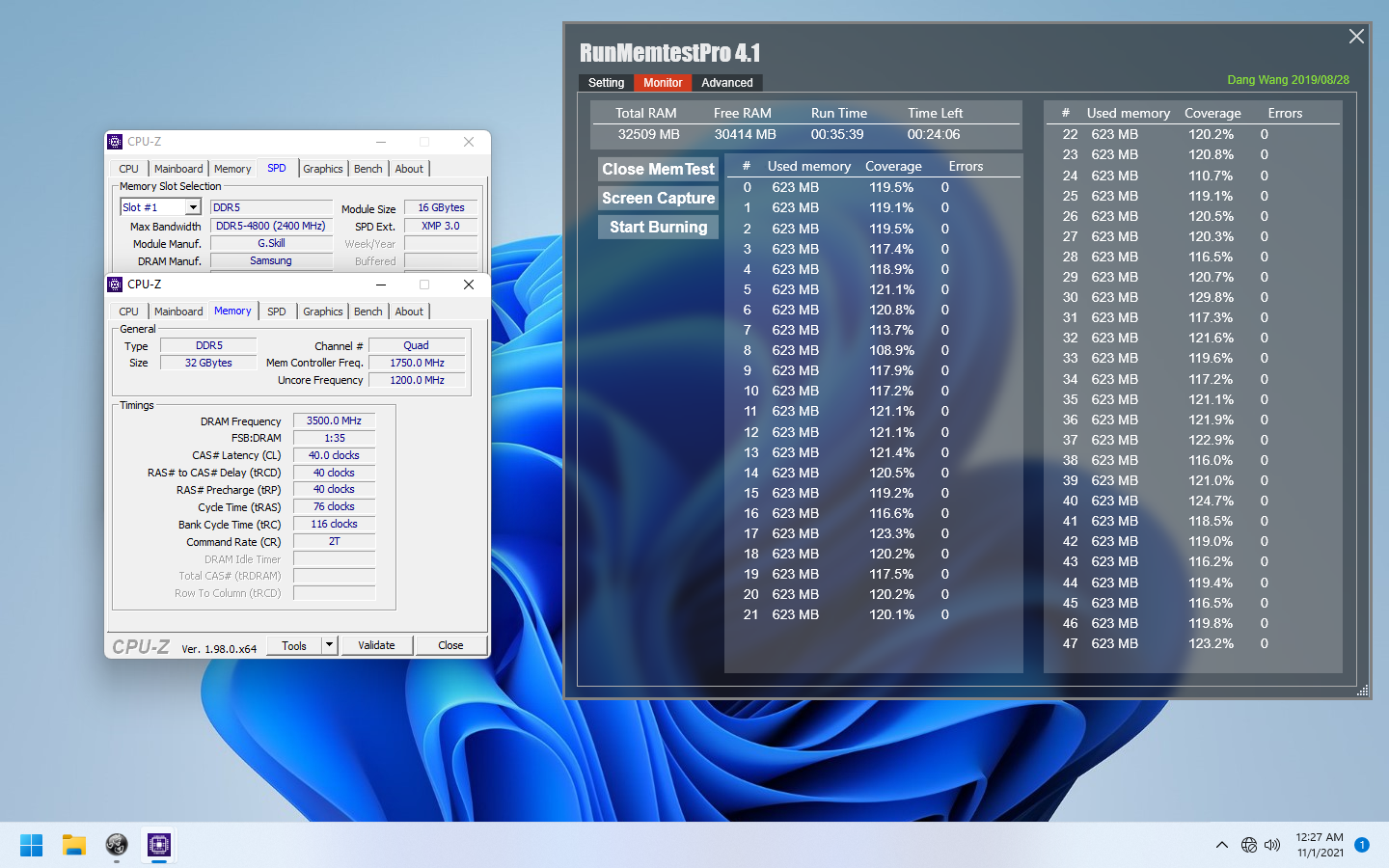DDR5-7000 Modules Incoming from Multiple Brands
Last week Gigabyte published a list of DDR5-7000 memory modules supported by its Z690 Aorus Tachyon motherboard, and this week G.Skill confirmed that it had managed to push its Trident Z5 DIMMs to 7000 MT/s without usage of liquid nitrogen or other extreme cooling methods. Apparently, there are DDR5-7000 modules incoming from multiple vendors, but to hit such speeds requires rather high voltage.
Gigabyte's list includes 16GB DDR5 memory modules from Adata, Gigabyte's Aorus, and TeamGroup that can work at a 7000 MT/s data transfer rate with CL40 40-40-80 latency settings at 1.5 Volts.
All these modules are based on chips from Samsung, but so far none of the companies have formally announced them, so we can only assume that they are set to be available at a later date. G.Skill managed to run a pair of its 16GB Trident Z5 modules at 7000 MT/s with CL40 40-40-76 timings and pass the Memtest stability test, though the company did not disclose the voltage setting of the modules.

Regular DDR5 runs at 1.1V, while overclocked modules typically use up to 1.25V. Running 1.5V represents a whopping 36% overvoltage compared to the JEDEC standard. That's a pretty sizeable jump in voltage, just for the final 500 MT/s. It's difficult to say how such a high voltage affects longevity of DRAM ICs, not to mention Intel's DDR5 memory controller, but a 36% overvoltage is not something consumer-grade hardware will likely handle for prolonged periods of time.
Still, enthusiasts like to push hardware to its limits and companies are willing to help them. In fact, now that memory modules have their own voltage regulating module and power management IC, makers of DIMMs can at least ensure that they use premium components and deliver quality power to the DRAM.
One of the things that suppliers of premium memory modules never stop is their race for highest possible data transfer rates. Even when companies cannot offer certain speed bins here and now, they can still pre-announce them or issue a teaser to demonstrate that they are working on such DIMMs. DDR5 offers makers of enthusiast-grade DIMMs even higher levels of performance potential, but the technology is so new that the manufacturers are still learning. For now, they're being cautious about offering extreme speeds while they gain more experience with the new memory ICs and controllers and figure out how they behave in overclocked mode for prolonged periods.
In the meantime, DDR5-7000 represents too sweet a number to miss, which is why at least four companies are working on such modules. We'll likely see far higher speeds from DDR5 in the coming years. How much higher, though? GDDR5 speeds topped out at around 9 GT/s with the GTX 1060, and while the underlying technology may be different, it wouldn't be too surprising to see desktop memory hit that speed in the coming years.
Get Tom's Hardware's best news and in-depth reviews, straight to your inbox.

Anton Shilov is a contributing writer at Tom’s Hardware. Over the past couple of decades, he has covered everything from CPUs and GPUs to supercomputers and from modern process technologies and latest fab tools to high-tech industry trends.
-
watzupken With the current DDR5 being manufactured on whatever existing node, I think we are hitting a brick wall pretty soon. 7000 is however quite a sizeable increase in frequency over the JEDEC standard @ 4800Mhz. I am also pretty sure these high frequency rams will cost quite a lot, which makes little sense to adopt them early.Reply